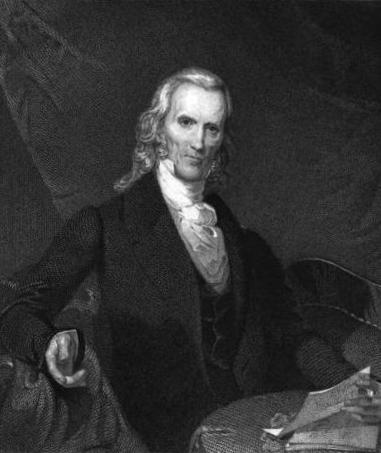|
Fort Sanders (Knoxville Neighborhood)
Fort Sanders is a neighborhood in Knoxville, Tennessee, USA, located west of the downtown area and immediately north of the main campus of the University of Tennessee. Developed in the late 19th century as a residential area for Knoxville's growing upper and middle classes, the neighborhood now provides housing primarily for the university's student population. The neighborhood still contains a notable number of its original Victorian-era houses and other buildings, several hundred of which were added to the National Register of Historic Places in 1980 as the Fort Sanders Historic District. Fort Sanders is named for a Civil War-era Union bastion that once stood near the center of the neighborhood, which was the site of a key engagement in 1863. In the 1880s, several of Knoxville's wealthier residents built sizeable houses in what is now the southern half of Fort Sanders, then known as "White's Addition," while the northern half, known as "Ramsey's Addition," was developed to ... [...More Info...] [...Related Items...] OR: [Wikipedia] [Google] [Baidu] |
Knoxville, Tennessee
Knoxville is a city in and the county seat of Knox County in the U.S. state of Tennessee. As of the 2020 United States census, Knoxville's population was 190,740, making it the largest city in the East Tennessee Grand Division and the state's third largest city after Nashville and Memphis.U.S. Census Bureau2010 Census Interactive Population Search. Retrieved: December 20, 2011. Knoxville is the principal city of the Knoxville Metropolitan Statistical Area, which had an estimated population of 869,046 in 2019. First settled in 1786, Knoxville was the first capital of Tennessee. The city struggled with geographic isolation throughout the early 19th century. The arrival of the railroad in 1855 led to an economic boom. The city was bitterly divided over the secession issue during the American Civil War and was occupied alternately by Confederate and Union armies, culminating in the Battle of Fort Sanders in 1863. Following the war, Knoxville grew rapidly as a major whole ... [...More Info...] [...Related Items...] OR: [Wikipedia] [Google] [Baidu] |
James Longstreet
James Longstreet (January 8, 1821January 2, 1904) was one of the foremost Confederate generals of the American Civil War and the principal subordinate to General Robert E. Lee, who called him his "Old War Horse". He served under Lee as a corps commander for most of the battles fought by the Army of Northern Virginia in the Eastern Theater, and briefly with Braxton Bragg in the Army of Tennessee in the Western Theater. After graduating from the United States Military Academy at West Point, Longstreet served in the United States Army during the Mexican–American War. He was wounded in the thigh at the Battle of Chapultepec, and during recovery married his first wife, Louise Garland. Throughout the 1850s, he served on frontier duty in the American Southwest. In June 1861, Longstreet resigned his U.S. Army commission and joined the Confederate Army. He commanded Confederate troops during an early victory at Blackburn's Ford in July and played a minor role at the First Battle of ... [...More Info...] [...Related Items...] OR: [Wikipedia] [Google] [Baidu] |
Knoxville Iron Company
The Knoxville Iron Company was an iron production and coal mining company that operated primarily in Knoxville, Tennessee, United States, and its vicinity, in the late 19th and 20th centuries.J. S. Rabun, National Register of Historic Places Registration Form for Knoxville Iron Foundry Complex – Nail Factory and Warehouse, 6 October 1980. The company was Knoxville's first major post-Civil War manufacturing firm, and played a key role in bringing heavy industry and railroad facilities to the city. The company was also the first to conduct major coal mining operations in the lucrative coalfields of western Anderson County, Tennessee, Anderson County, and helped establish one of Knoxville's first residential neighborhoods, Mechanicsville, Knoxville, Mechanicsville, in the late 1860s.Old ... [...More Info...] [...Related Items...] OR: [Wikipedia] [Google] [Baidu] |
Shotgun House
A shotgun house is a narrow rectangular domestic residence, usually no more than about wide, with rooms arranged one behind the other and doors at each end of the house. It was the most popular style of house in the Southern United States from the end of the American Civil War (1861–65) through the 1920s. Alternative names include shotgun shack, shotgun hut, shotgun cottage, and in the case of a multihome dwelling, shotgun apartment; the design is similar to that of railroad apartments. A longstanding theory is that the style can be traced from Africa to Saint Dominican influences on house design in New Orleans, but the houses can be found as far away as Key West and Ybor City in Florida, and Texas, and as far north as Chicago, Illinois. Though initially as popular with the middle class as with the poor, the shotgun house became a symbol of poverty in the mid-20th century. Urban renewal has led to the destruction of many shotgun houses; however, in areas affected by gentr ... [...More Info...] [...Related Items...] OR: [Wikipedia] [Google] [Baidu] |
Hugh Lawson White
Hugh Lawson White (October 30, 1773April 10, 1840) was a prominent American politician during the first third of the 19th century. After filling in several posts particularly in Tennessee's judiciary and state legislature since 1801, thereunder as a Tennessee Supreme Court justice, he was chosen to succeed former presidential candidate Andrew Jackson in the United States Senate in 1825. He became a member of the new Democratic Party, supporting Jackson's policies and his future presidential administration. However, he left the Democrats in 1836 and was a Whig candidate in that year's presidential election.Mary Rothrock, ''The French Broad-Holston Country: A History of Knox County, Tennessee'' (Knoxville, Tenn.: East Tennessee Historical Society, 1972), pp. 501-502. An ardent strict constructionist and lifelong states' rights advocate, White was one of President Jackson's most trusted allies in Congress in the late 1820s and early 1830s.Nancy Scott, A Memoir of Hugh Lawson ... [...More Info...] [...Related Items...] OR: [Wikipedia] [Google] [Baidu] |
Lafayette McLaws
Lafayette McLaws ( ; January 15, 1821 – July 24, 1897) was a United States Army officer and a Confederate general in the American Civil War. He served at Antietam and Fredericksburg, where Robert E. Lee praised his defense of Marye's Heights, and at Gettysburg, where his division made successful assaults through the Peach Orchard and Wheatfield, but was unable to dislodge Union forces from Cemetery Ridge. After the Knoxville Campaign, he was court-martialed for inefficiency, though this was overturned for procedural reasons. Finally he was sent to his native Georgia to resist Sherman's March to the Sea, but had to retreat through the Carolinas, losing many men through desertion, and is presumed to have surrendered with Joseph E. Johnston in April 1865. McLaws remained bitter about his court-martial, especially since the charges had been filed by James Longstreet, his friend and classmate at West Point, with whom he had served for years. Although he defended Longstreet again ... [...More Info...] [...Related Items...] OR: [Wikipedia] [Google] [Baidu] |
The Hill (Knoxville)
The Hill is the colloquial name for the location of various academic buildings on the University of Tennessee, Knoxville's campus. It comprises the oldest part of the university, and is located at the eastern side of the campus. There are two concentric roads around the Hill. University buildings ring both routes, with Ayres Hall located at the apex. The sweeping lawn in front of Ayres Hall that drops to Cumberland Avenue is one of the largest open spaces on the campus. Programmatically, the Hill is populated primarily by engineering and science programs. Other university programs, as well as the dormitories and administrative headquarters, are located west of the Hill. Along with Neyland Stadium and the Torchbearer statue and eternal flame, the Hill is one of the most recognizable symbols of the university. The Hill was originally known as Barbara Hill, in honor of the daughter of Governor William Blount. Thomas Jefferson had previously recommended that the college relo ... [...More Info...] [...Related Items...] OR: [Wikipedia] [Google] [Baidu] |
Picket (military)
A picket (archaically, picquet ariant form ''piquet'' is a soldier, or small unit of soldiers, placed on a defensive line forward of a friendly position to provide timely warning and screening against an enemy advance. It can also refer to any unit (e.g. a scout vehicle, surveillance aircraft or patrol ship) performing a similar function. A picket guarding a fixed position may be known as a sentry or guard. Origins Picket (Fr. , a pointed stake or peg, from , 'to point or pierce'), is thought to have originated in the French Army around 1690, from the circumstance that an infantry company on outpost duty dispersed its musketeers to watch, with a small group of pikemen called ''piquet'' remaining in reserve. It was in use in the British Army before 1735 and probably much earlier. Usage ''Picket'' now refers to a soldier or small unit of soldiers maintaining a watch. This may mean a watch for the enemy, or other types of watch e.g. fire picket. This can be likened to the art o ... [...More Info...] [...Related Items...] OR: [Wikipedia] [Google] [Baidu] |
Bijou Theatre (Knoxville)
The Bijou Theatre is a theater located in Knoxville, Tennessee, United States. Built in 1909 as an addition to the Lamar House Hotel, the theater has at various times served as performance venue for traditional theatre, vaudeville, a second-run moviehouse, a commencement stage for the city's African-American high school, and a pornographic movie theater. The Lamar House Hotel, in which the theater was constructed, was originally built in 1817, and modified in the 1850s. The building and theater were added to the National Register of Historic Places in 1975.Dean Novelli, "On a Corner of Gay Street: A History of the Lamar House—Bijou Theater, Knoxville, Tennessee, 1817 – 1985." East Tennessee Historical Society ''Publications'', Vol. 56 (1984), pp. 3-45. The Lamar House Hotel was built by Irish immigrant Thomas Humes (1767–1816) and his descendants, and quickly developed into a gathering place for Knoxville's wealthy. In 1819, Andrew Jackson became t ... [...More Info...] [...Related Items...] OR: [Wikipedia] [Google] [Baidu] |
William P
William is a masculine given name of Norman French origin.Hanks, Hardcastle and Hodges, ''Oxford Dictionary of First Names'', Oxford University Press, 2nd edition, , p. 276. It became very popular in the English language after the Norman conquest of England in 1066,All Things William"Meaning & Origin of the Name"/ref> and remained so throughout the Middle Ages and into the modern era. It is sometimes abbreviated "Wm." Shortened familiar versions in English include Will, Wills, Willy, Willie, Liam, Bill, and Billy. A common Irish form is Liam. Scottish diminutives include Wull, Willie or Wullie (as in Oor Wullie or the play ''Douglas''). Female forms are Willa, Willemina, Wilma and Wilhelmina. Etymology William is related to the German given name ''Wilhelm''. Both ultimately descend from Proto-Germanic ''*Wiljahelmaz'', with a direct cognate also in the Old Norse name ''Vilhjalmr'' and a West Germanic borrowing into Medieval Latin ''Willelmus''. The Proto-Germa ... [...More Info...] [...Related Items...] OR: [Wikipedia] [Google] [Baidu] |








